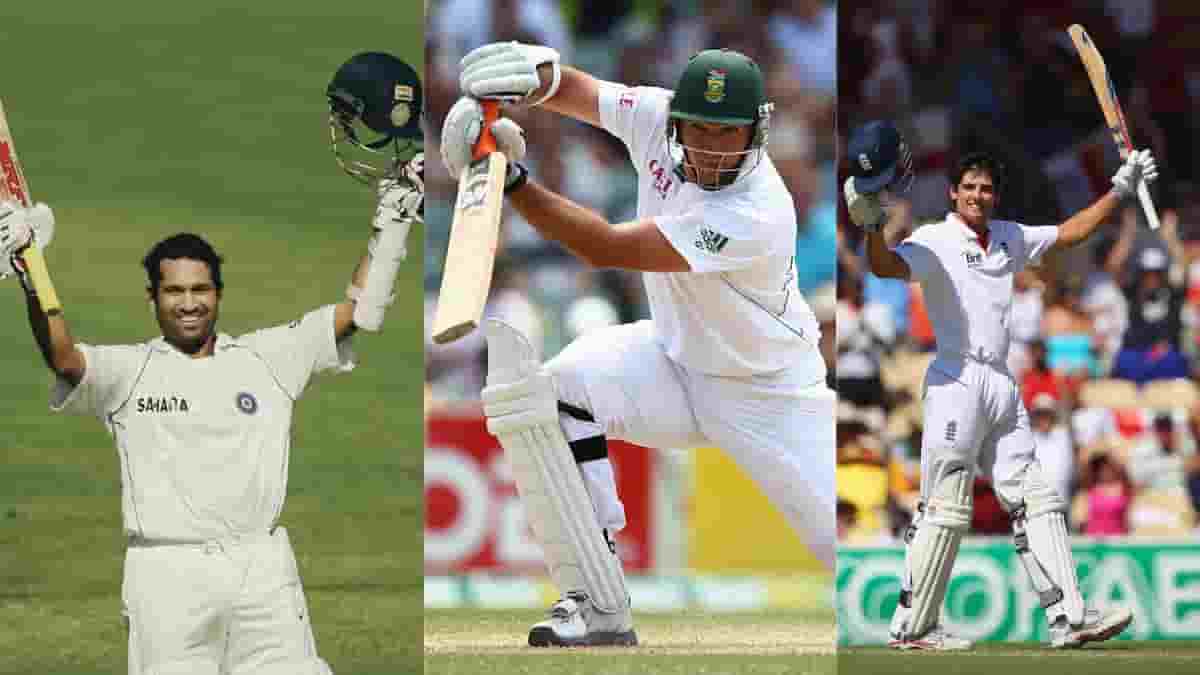 Source: Twitter
Source: Twitter
The game of test cricket, which is frequently regarded as the purest version, presents many difficulties for batsmen. One of these difficulties is scoring runs in the fourth inning, which stands out as being particularly difficult. The surface degrades, the ball starts to spin and seam more, and the urgency of the chase increases as the game goes on. In this article, we’ll explore the reasons why a Test match’s 4th innings is a difficult task that sets the extraordinary apart from the average.
-
Pitch Deterioration and Uneven Bounce
The pitch deteriorates over the course of a Test match, making it more unpredictable and difficult for batters to navigate. The surface becomes cracked due to wear, which causes the ball to divert from its planned path. As a result, batsmen frequently struggle to determine the line and length of deliveries, which results in erroneous timing and dismissals.
Additionally, in the fourth innings, the uneven bounce is more obvious. The ball may surprise keep low or kick up, making it challenging for batsmen to alter their timing and technique. This unpredictability benefits bowlers because they can make use of the worsening surface to their advantage and threaten the wickets of the batsman significantly.
-
Increased Spin and Lateral Movement
The fourth inning’s pitch wear has an impact on ball behaviour as well. Spinners are used because the uneven surface provides plenty of turn and grip. It is difficult for batters to interpret the spin and determine the degree of turn because of the ball’s sharp spin. With deceptive flight and variation, this raises the possibility of edges, bat-pad catches, or even dismissals.
The abrasive pitch conditions can be used by seam bowlers to get more movement from the surface. The batsmen are put through a rigorous assessment by the ball, which can seam, swing, or even reverse swing. The lateral movement may result in errant shots, edges, and dismissals in the end. Batsmen must be particularly alert and have outstanding technique and reflexes to successfully handle these problems.
-
Mounting Pressure and Chasing Targets
In the fourth inning of a Test match, a difficult chase frequently occurs. The pressure to score runs quickly increases as the objective set by the opposition looms enormous. Batsmen are compelled to take chances as the overs ran out, which increases the likelihood that they may lose their wicket. As the batters struggle to deal with the gravity of the match situation, the pressure has an impact on both shot selection and the batsmen’s mental stability.
In addition, field placements become more aggressive in the fourth inning as the opposition captain employs close-in fielders, catchers, and attacking methods. Knowing that the batters are in a hurry, the bowlers take advantage of any vulnerability to apply further pressure. It is more difficult for batters to score runs in the fourth innings because of the difficult target and increasing pressure.
Players with the most runs scored in the 4th innings
-
Sachin Tendulkar
One of the all-time best test batsmen is Sachin Tendulkar. In the 4th innings of a test match, the illustrious Indian batter amassed the most runs. In 60 innings, Tendulkar scored 1625 runs. His average in the fourth innings was 36.93 as he chased the objective while scoring three hundred and seven half-centuries.
-
Graeme Smith
In the fourth innings of a test match, Graeme Smith scored the joint second-most runs. The opening batter for South Africa scored 1611 runs in 41 innings, a staggering average of 51.96. Smith batted in the fourth innings and amassed 4 centuries and 9 half-centuries.
-
Alastair Cook
Smith and Alastair Cook are matched as both players have scored 1611 runs in the fourth inning. The English left-handed opener amassed 2 centuries and 9 half-centuries for an average of 35.80.
Conclusion
For many reasons, scoring runs in the fourth innings of a Test match is extremely difficult for batsmen. The difficulty level is impacted by the declining pitch, irregular bounce, increased spin, lateral movement, increasing pressure, and the requirement to chase targets. Successful batsmen have great talent, technique, and temperament under these circumstances. Patience, flexibility, and mental toughness are necessary traits to be able to overcome these difficulties. The genuine calibre of batters is put to the test in these high-pressure situations, and in the world of Test cricket, the distinction between the extraordinary and the average is made by their capacity to overcome challenges.
Also Read: Does India Need To Look Away From 3 Format Players?
“Get more breaking news, cricket updates, fixtures, and trending news only on cricfiles.com. Follow us on Facebook or Twitter and Subscribe to our YouTube Channel today.”





